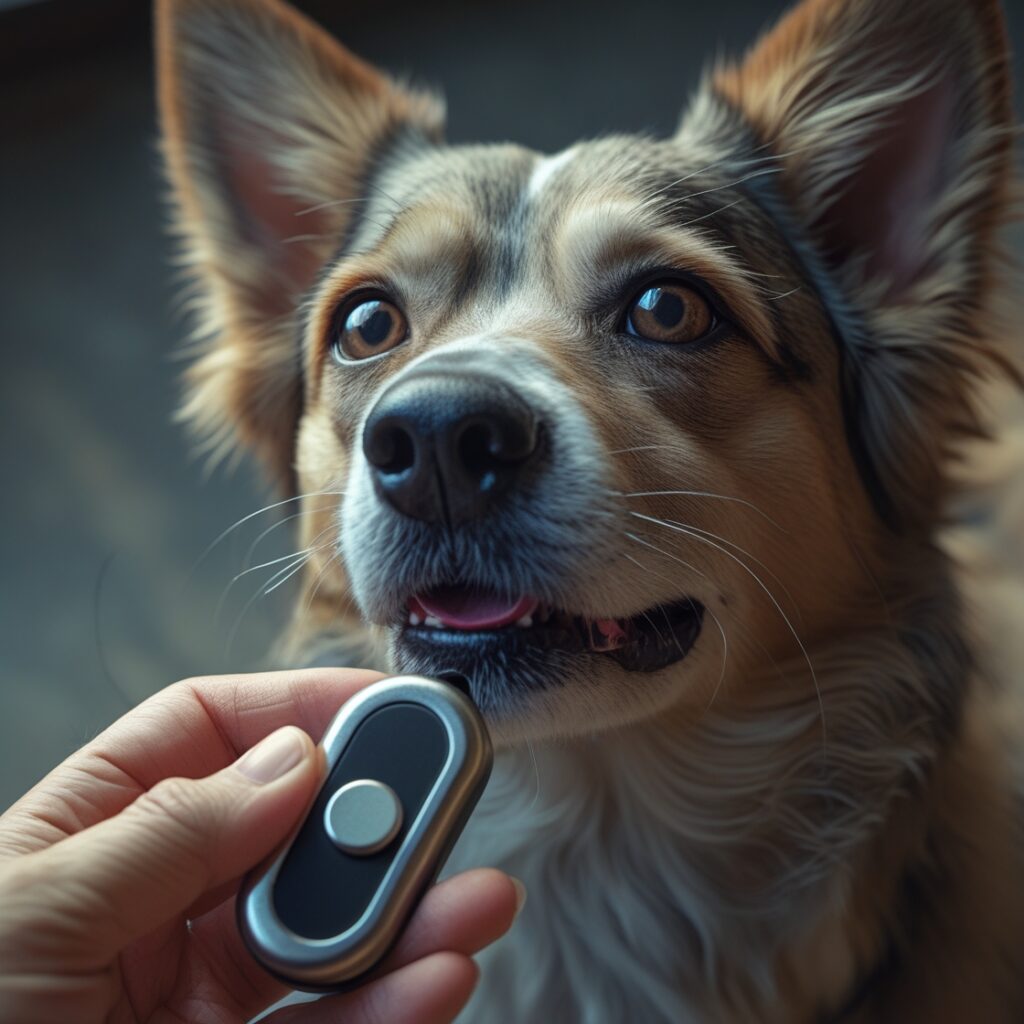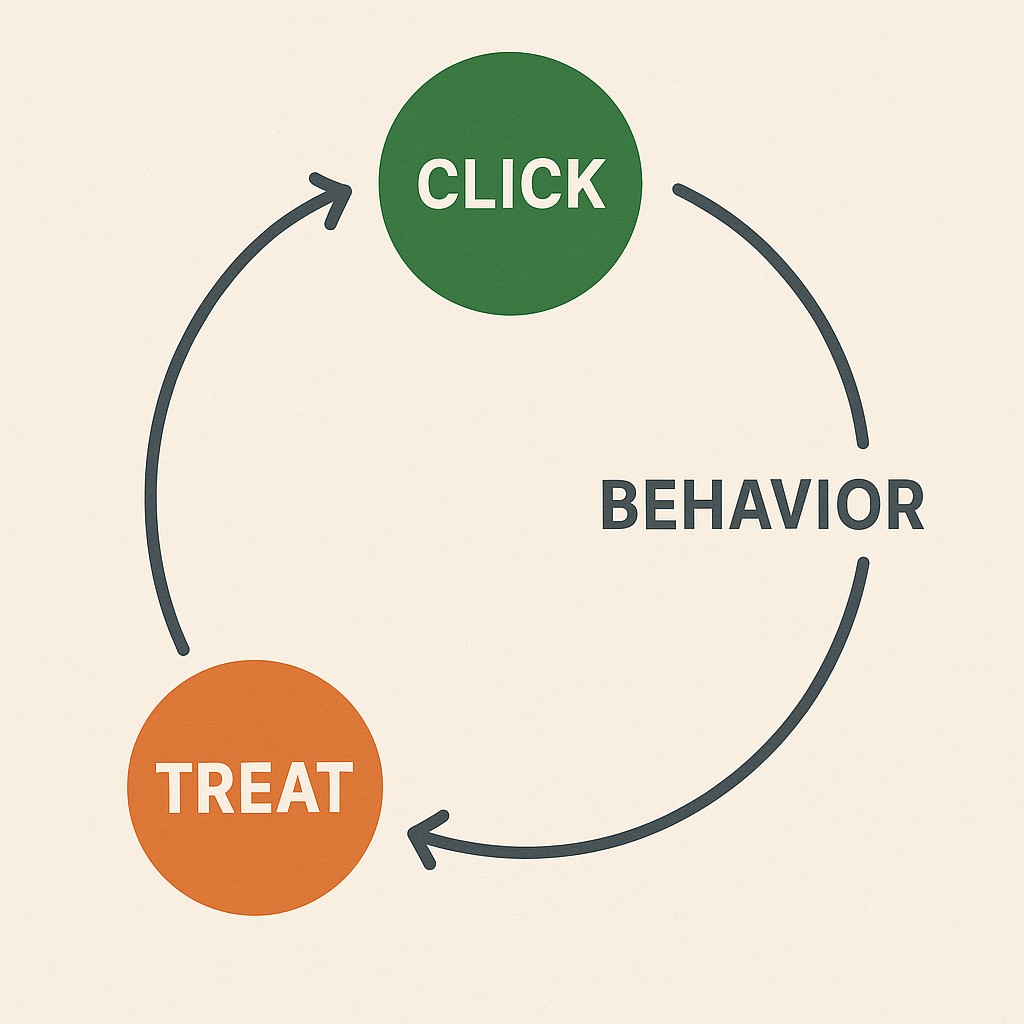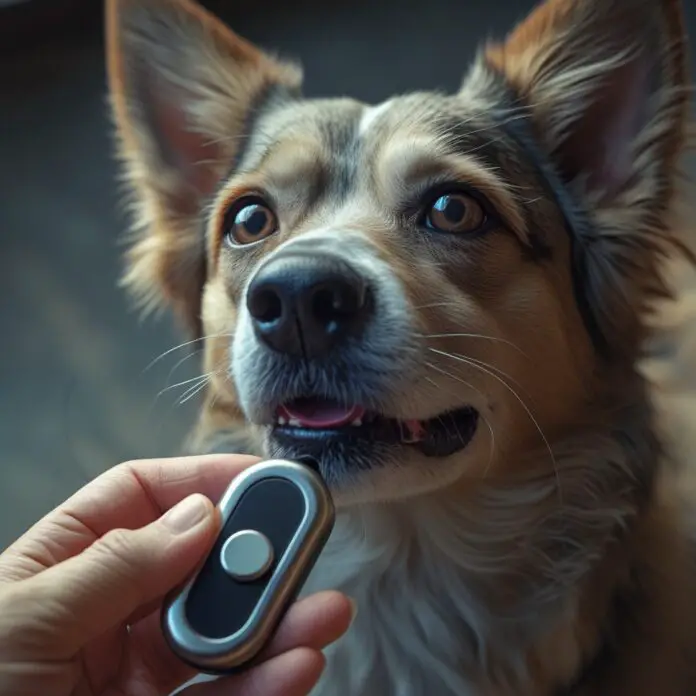Training your dog doesn’t have to be a frustrating process. In fact, it can be a joyful bonding experience when you use the right techniques. One of the most effective and humane methods of dog training is clicker training—a form of positive reinforcement that has been used successfully by professional trainers, animal behaviorists, and pet owners worldwide.
This guide will take you through everything you need to know as a beginner: what clicker training is, how it works, why it’s effective, and how you can get started at home with just a clicker and a pocketful of treats.

What Is Clicker Training?
Clicker training is a method based on operant conditioning, where a distinct “click” sound is used to mark a desired behavior, followed by a reward. The click tells your dog, “Yes! That’s what I wanted!”—and the treat that follows strengthens the behavior so it’s more likely to happen again.
The concept of clicker training isn’t new. It has roots in marine mammal training and has since become popular in household pet training due to its clear communication, consistency, and humane approach.

Why Clicker Training Works So Well
Positive reinforcement is backed by science. Dogs, like people, respond better to rewards than punishment. Here’s why clicker training is so effective:
1. Precision
The click captures the exact moment your dog performs the correct behavior, making it easier for them to understand what they’re being rewarded for.
2. Speed
Dogs learn more quickly when there’s no confusion. A fast, consistent signal like the clicker speeds up the learning process.
3. Clarity Over Cues
Verbal cues can vary in tone and timing. The clicker is neutral, consistent, and distinct, offering clearer communication.
4. Better Relationship
This method builds trust and a stronger bond with your pet, as it avoids harsh corrections and emphasizes mutual respect.
How to Start Clicker Training
Step 1: Pick the Right Clicker
There are several types of clickers: box clickers (loud), button clickers (quieter), and even digital clickers on apps. Choose one that suits both you and your dog’s sensitivity to sound.
Step 2: Charge the Clicker
Before actual training begins, you need to teach your dog that the click = reward. This is called “charging the clicker.”

- Click, then immediately give a treat.
- Repeat 10–15 times in a row.
- Do this for a few sessions until your dog perks up at the sound of the click.
Step 3: Start with a Simple Behavior
Choose a behavior your dog naturally does—like sitting.
- Wait for your dog to sit.
- The moment their rear hits the ground—click.
- Follow immediately with a treat.
- Repeat several times. Your dog will quickly associate sitting with good things.
Step 4: Add a Cue
Once your dog is consistently offering the behavior, add the verbal cue “Sit” right before they perform it. Over time, your dog will sit when they hear the cue—because they expect the click and treat to follow.
Real-Life Example: Teaching “Down”

Let’s say you want to teach your dog to lie down.
- Wait until they naturally lie down.
- Click at the exact moment they do.
- Toss them a treat.
- Once they start offering the behavior more, add the cue “Down” just before they perform it.
Tip: Some dogs respond better to luring. You can use a treat to guide them into the down position, then click and reward.
Clicker Training Dos and Don’ts
✅ Do:
- Use high-value treats like chicken or cheese.
- Train in a quiet, distraction-free environment.
- Keep sessions short—5 to 10 minutes.
- End sessions on a positive note.
❌ Don’t:
- Click multiple times per behavior. One click = one reward.
- Use the clicker to call your dog or get attention.
- Delay the reward. Timing is everything.
- Use the clicker as a punishment or noise aversion.
Advancing Your Training: Beyond the Basics
Once your dog understands how clicker training works, the sky’s the limit. You can use this technique to teach:

- Complex tricks like “roll over” or “play dead”
- Walking politely on a leash
- Agility course commands
- Redirection from bad behaviors like jumping or barking
You can also shape behaviors gradually by rewarding approximations. This is called shaping—clicking and rewarding closer and closer approximations to the final behavior you want.
Common Problems (and Solutions)
Problem 1: My dog doesn’t respond to the clicker.
Solution: Go back to charging the clicker. If the click doesn’t have value yet, your dog won’t respond.
Problem 2: My dog gets too excited.
Solution: Use lower-value treats or take breaks more often. Overstimulation can interfere with learning.
Problem 3: My dog only responds when I have treats.
Solution: Gradually fade out food rewards. Start using praise or play instead, or click without showing a treat immediately.
Is Clicker Training Right for Every Dog?
In most cases, yes! However, if your dog is:
- Hearing impaired, you may need to use a visual marker like a flashlight or hand signal.
- Noise-sensitive, consider using a softer clicker or training with a verbal marker like “Yes!”
Tools You’ll Need to Get Started
- A clicker (or clicker app)
- Soft, high-reward treats
- A pouch or bag for treats
- A calm space for training
- Your patience and consistency
Final Thoughts
Clicker training is a simple yet powerful method to train your dog using positive reinforcement. It emphasizes trust, clear communication, and mutual respect between you and your pet. Whether you’re teaching basic obedience or fun tricks, clicker training makes learning engaging and fun—for both of you.
It’s a fantastic tool for building a strong relationship and setting the foundation for lifelong learning. So grab your clicker, stock up on treats, and get ready to see your furry friend thrive!



